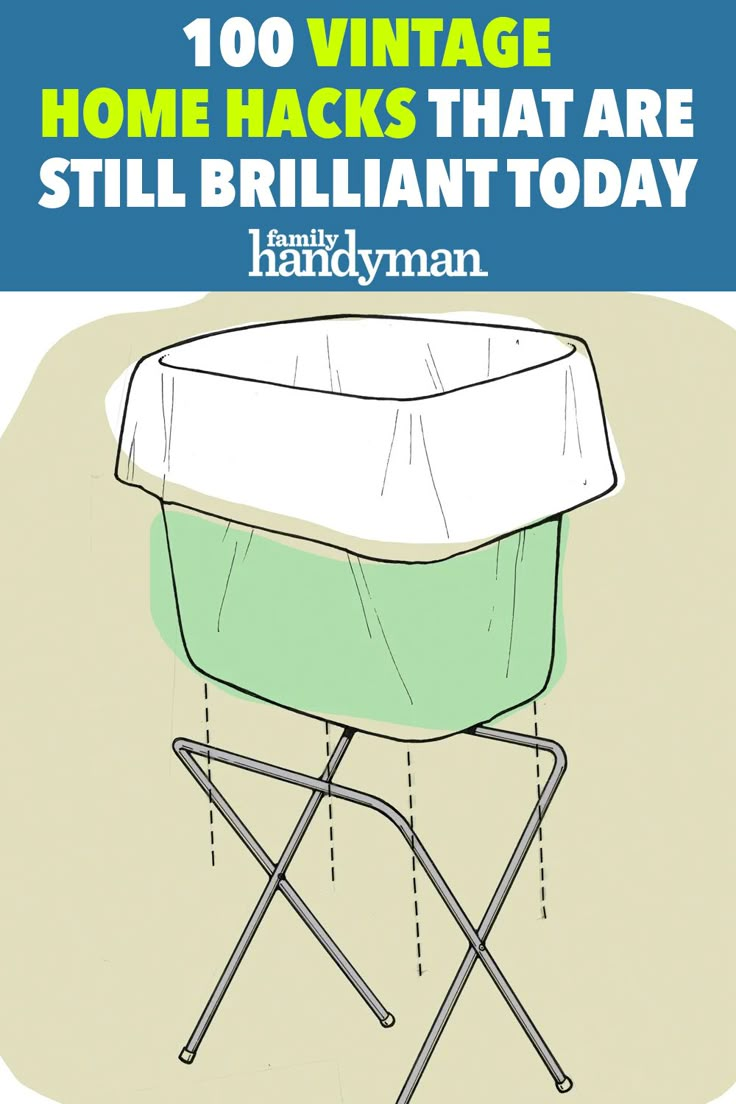ADVERTISEMENT
30 / 45
Family Handyman Big Sheet Carrier
You don’t have to struggle trying to lug around sheets of plywood or drywall. Just tie together the two ends of a length of rope about 18-feet long. Hook this loop around the two bottom corners of the sheet to form a handle.
31 / 45
Family Handyman
Thumb Saver
Here’s a way to avoid blue thumbnail misery when you make an occasional bad swing with a hammer: When starting a nail, hold it with your thumb and forefinger right under the head rather than lower down. You’ll be able to keep your eye on your thumb as well as the nailhead, giving you better aim. And if you do make a bad swing, your thumb and finger are more likely to be deflected by the hammer than squashed.
32 / 45
Family Handyman
Gutter Straightener
Ice coming off the roof can bend the spikes that secure gutters to the soffit fascia. To straighten the spikes without removing both them and the gutters, use a 2-foot length of angle iron and a heavy metal chain link with the center section cut out of one side. Working from a ladder (be careful!), you’ll find that the angle iron and chain link provide easy leverage to straighten out the spike and get the gutters back in alignment.
33 / 45
Family Handyman
No-Tip Garbage Cans
There really is a simple way to keep those garbage cans from getting blown over or dumped. For each garbage can, all you need are two 3/4-in. screw eyes and a 30-in. hook-end Bungee cord from the hardware store to keep them in their place.
34 / 45
Family Handyman
Garage Door Saver
Extend the life of your multi-panel wood garage door by keeping its vulnerable bottom section free of moisture. Run a bead of caulk along all the joints of the bottom horizontal rail where it joins the panels. Use a paintable caulk.
35 / 45
Family Handyman
Moveable Deck Umbrellas
Does your deck umbrella always seem to be in the wrong spot to shade you from the sun? Mount several sets of galvanized plumbing pipe straps on the deck posts or railing in key places. Use straps with a slightly wider diameter than the umbrella pole. Then just pick a spot and slip the umbrella pole through the straps until the bottom of the pole rests on the deck. You’ll get shade right where you need it.
36 / 45
Family Handyman
Trailer Wire Holder
I finally got sick and tired of the trailer wiring harness hanging down behind my pickup truck. It looked ugly and was always exposed to the elements. The solution: a magnetic key storage box. Cut a slot on one end of the box just large enough for the wires to pass through. Place the connector in the box and place the box on the hitch bar or any other steel horizontal surface under the vehicle. — Ken Maretka
37 / 45
Family Handyman
Plywood Concrete Mixer
If you have a batch of concrete to mix, but nothing to mix it in, use a 4 x 8-foot sheet of 1/4- or 3/8-inch plywood. Place a few bricks or scraps of 2×4 under all four of the plywood corners to form a shallow, concave mixing tub. Clean the concrete off thoroughly, and when you’re finished, you can still use the plywood with the other side up. — John Gandolfo
38 / 45
Family Handyman
Firewood Shelter
Here’s a low-tech, no-hassle shelter for keeping your firewood dry. Drive two stakes or poles into the ground 6-feet apart, and about 16-inches out from the wall. Stack the firewood between the poles. Cut two holes in a sheet of 2-x 8-foot corrugated fiberglass so it will slide down the poles and rest on top of the firewood. If you keep the pile somewhat level as you use the wood, the fiberglass will keep sliding down the poles to provide a snug covering for the wood. —Jack Curran
39 / 45
Family Handyman
Perfect-Fit Crown Molding
When you’re installing crown molding against a textured ceiling, here’s a way to get a nice, tight fit: Cut an 8-inch piece of the molding you’re putting up, and staple a piece of medium-grit sandpaper over the top edge. Then hold the molding in place against the wall and ceiling exactly as it would be attached, and slide it back and forth to sand the area smooth. Not only do you get a perfect fit, but the slight ridge formed by the sanding helps hold the molding in position when you nail it. — Mark Swinson
SEE NEXT PAGE
ADVERTISEMENT
